<< Previous | Displaying results 4111-4120 of 6776 for "" | Next >>
Identification tag issued to Liesel Weil by the American Friends Service Committee for her voyage to the United States on board the Mouzinho. More than 100 children sailed to New York aboard the Mouzinho, a Portuguese liner. The transport was sponsored by the American Friends Service Committee, and representatives of several Jewish organizations met the children in New York. Marseille, France, 1941.
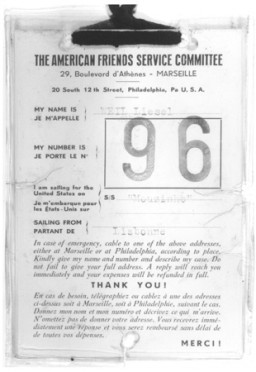
Photo album containing photographs taken by a passenger aboard the St. Louis, with a depiction of the ship on the cover. In 1939, this German ocean liner carried Jewish refugees seeking temporary refuge in Cuba. It was forced to return to Europe after Cuba refused to allow the refugees entry into the country.
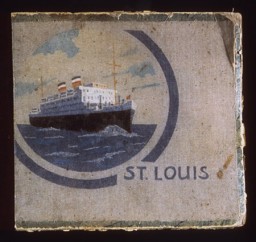
An illustration in the North-China Daily News following the arrival of a group of Jewish refugees in Shanghai, in Japanese-occupied China. August 24, 1941. [From the USHMM special exhibition Flight and Rescue.]
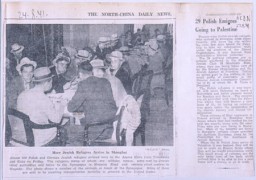
The Municipal Tourist Office in Kobe issued this folded English-language tourist guide to the city. One side shows photographs and descriptions of Kobe's historic and scenic sites and the other provides a tourist map of Kobe. Jewish refugees in Kobe used such pieces of information. Kobe, Japan, 1940-1941. [From the USHMM special exhibition Flight and Rescue.]
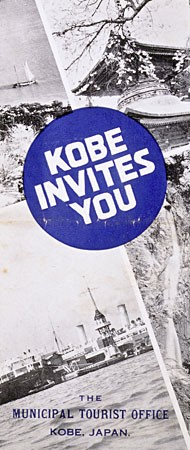
The Kobe Municipal Office issued an English-language tourist guide to Kobe and its environs. This illustration comes from the interior pages of the guide. Jewish refugees in Kobe used such pieces of information. Kobe, Japan, 1940-1941. [From the USHMM special exhibition Flight and Rescue.]
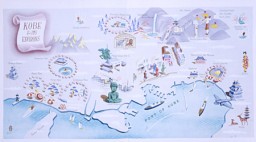
German Jewish refugees purchased this Japanese-German phrase book shortly after their arrival in Japan. Japan, 1940-1941. [From the USHMM special exhibition Flight and Rescue.]
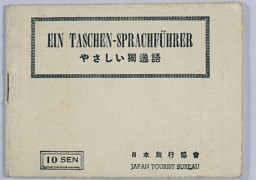
A chart of prisoner markings used in German concentration camps. Dachau, Germany, ca. 1938–1942. Beginning in 1937–1938, the SS created a system of marking prisoners in concentration camps. Sewn onto uniforms, the color-coded badges identified the reason for an individual’s incarceration, with some variation among camps. The Nazis used this chart illustrating prisoner markings in the Dachau concentration camp.
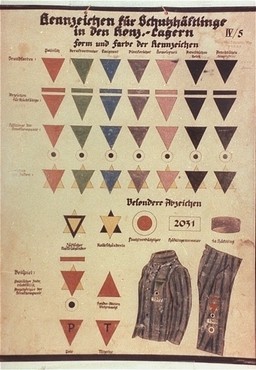
Many different kinds of railway cars were used for deportations. They varied in size and weight. The railway car on display in the United States Holocaust Memorial Museum's Permanent Exhibition is of just one type used. The dimensions of the railway car in the Museum's exhibition are as follows: Total length 31 feet 6 inches (9.6 meters); interior space for deportees 26 feet 2 inches (8 meters). Total height 14 feet (4.3 meters) from the bottom of the wheel to the highest point of the car; interior space…
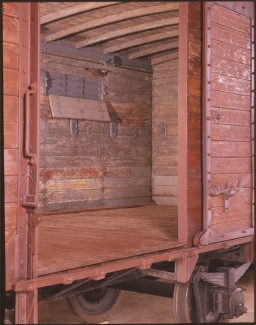
Many different kinds of railway cars were used for deportations. They varied in size and weight. The railway car on display in the United States Holocaust Memorial Museum's Permanent Exhibition is of just one type used. The dimensions of the railway car in the Museum's exhibition are as follows: Total length 31 feet 6 inches (9.6 meters); interior space for deportees 26 feet 2 inches (8 meters). Total height 14 feet (4.3 meters) from the bottom of the wheel to the highest point of the car; interior space…
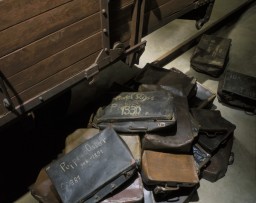
This wedding dress was made from a parachute and worn by Lilly Lax for her wedding to Ludwig Friedman in a displaced persons camp. Ludwig had promised to find fabric for a white gown, and purchased an old parachute for this purpose. Lilly hired a seamstress to make the dress in exchange for her cigarette ration. Other brides in the Celle and Belsen displaced persons camps subsequently wore the dress. Lilly and Ludwig immigrated to the United States in 1948.
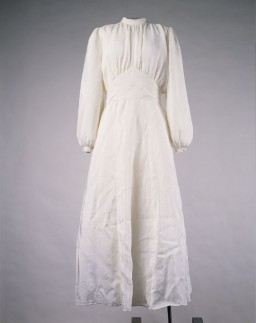
We would like to thank Crown Family Philanthropies, Abe and Ida Cooper Foundation, the Claims Conference, EVZ, and BMF for supporting the ongoing work to create content and resources for the Holocaust Encyclopedia. View the list of donor acknowledgement.